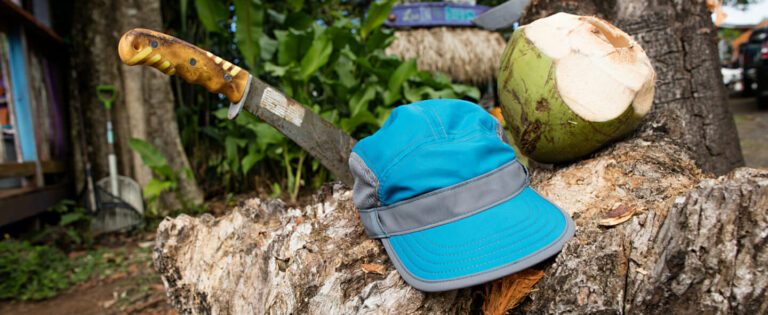
Nearly there! I can already see the next belay point. Just need to get my foot up there…come on…come on…nope, that’s not happening. I swear I used to be more flexible! And, these trousers are really starting to bother me!
Hmm…maybe I shouldn’t have worn my old jeans? I mean, I look great in them, but they’re definitely not good for climbing. But which ones are? What makes a good pair of climbing trousers?
Comfort and fit
The most important question to answer when buying a pair of climbing trousers is: what are going to use them for? Do you want to wear them whilst climbing icy walls on crazy alpine trips? If so, you might want to look into getting some trousers with better insulation. If you go to climbing gyms, climb at low altitudes and enjoy multi-pitch climbs, then you need a pair of trousers that are not only tough but will also provide protection in cool temperatures and light winds. For the climbing gym and rock climbing in the summer, you should buy a significantly thinner or even shorter pair of climbing trousers.
It is also important that the climbing trousers fit perfectly in every way. If they are too wide, they will not only slip, but also wrinkle up underneath your harness. If the trousers are too tight, they might the latter issue, but will end up restricting the freedom of movement you need whilst climbing.
Materials and Details

There are all sorts of different kinds of climbing trousers. There is everything from stylish trousers reminiscent of casualwear to very purist bouldering trousers. Again, you have to ask yourself: what are you going to use them for? If you are only going to wear them as active wear in the climbing gym or on the rocks, then you can go without a button closure and zip at the waist. In sports climbing and bouldering in particular, you’ll find that trousers with elastic waists or waistbands with drawstrings are very common. Also, this material often has a high percentage of cotton and is light and thin, making you feel like you have nothing on and thus allowing for maximum freedom of movement.
But if you want to wear the trousers for alpine adventures or both on the approach or over your entire weekend of climbing, then a classic closure, an integrated belt or belt loops are certainly beneficial. For trousers specifically made for rock and alpine climbing, breathable and flexible materials such as softshells and others are used. Often articulated knees and gusset inserts are incorporated for additional freedom of movement.
All climbing trousers are pretty sensitive at the knees. No matter what kind of climbing you do, incidental contact with the wall is inevitable. Plus, the harder the climb is, the more your trousers will suffer. For this reason, many climbing trousers are reinforced at the knees and equipped with abrasion-resistant material. Thus, not only are the knees protected, but the trousers themselves are equipped to take the beating as well. If you have ever stepped on your own trouser leg whilst climbing, then you will love this: adjustable leg openings. This practical feature is available in several versions and is as simple as it is effective. Using a drawstring, elasticated hem or zips, you can tighten the trouser leg. This way, you’ll be able to see your own toes and won’t have to run the risk of getting tangled up in your own trousers!
Pockets

Climbing trousers have a variety of pockets ranging from hand pockets and back pockets to leg and internal pockets. However, it is important that the pockets do not cause pressure points in conjunction with a climbing harness, even when empty. Of course, manufacturers of climbing trousers do affix the pockets to the trousers in such a way as to not cause any irritation. However, once you put on your climbing harness, you can usually forget about reaching your pockets. Depending on the placement, you can usually still reach the leg pockets, but the hand and back pockets are virtually inaccessible. It is thus recommended to empty the pockets before putting on the climbing harness, as this will protect the contents and you will be more comfortable. Depending on the model, all or some of the pockets will have zips. This is particularly handy if you wear the trousers when you’re not climbing as well or wish to carry a watch or a granola bar in your pocket during a longer trip.
Something short for summer
As I already mentioned, there are climbing shorts as well. As you can imagine, they are extremely comfortable on warm or sunny summer days. They often have the same practical features as their long counterpart. Even the material and fit of climbing shorts are similar to those of climbing trousers. However, shorts do however have a considerable disadvantage: The knees are not protected. Who cares! Some of our fellow climbers will say. For those who don’t want to scrape up their beautiful legs, here’s an alternative: three-quarter climbing pants. These are just as comfortable to wear on hot days as shorts, but they have the advantage that they extend far enough over the knee to protect it from scrapes and the like. These trousers are generally reinforced with abrasion-resistant material at the critical areas as well.
Conclusion

Not only are climbing trousers practical, but they also protect against injury, and depending on the model, are pretty stylish. If think about what you’ll be using them for and what features are important to you prior to buying a pair, you’ll be well on your way to finding the perfect climbing trousers. If you can’t decide between multiple pairs, make sure they fit comfortably, allow for plenty of manoeuvrability and don’t irritate you in any way. If possible, try on the trousers with your own climbing harness. If they pass the test, then I’d say: let the next climbing adventure begin!
If you have any further questions, our customer service team are happy to help. You can contact our customer service during the week from 9 a.m. till 4 p.m. and can be reached by phone at 03 33 33 67058 or via e-mail.



